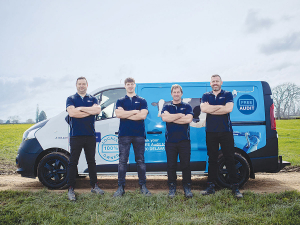With mechanised milking just over 100 years old, the intervening years have seen many changes in design, function and efficiency.
More recently, much of attention at the milking shed has moved to products centred around automation and animal health.
While there are many businesses in the key dairy areas focused on plant and machinery, they are usually removed from the high tech sector, rather choosing to concentrate on steelwork, plumbing and electricals.
A recently formed business based in Morrinsville is structured to support the high tech area of milk harvesting.
Automation Services Waikato and Bay of Plenty will fill the gap by selling, servicing and supporting industry giant De Laval’s extensive range of tech products.
Founded in January 2022 by industry experts Sam Anderson and Alan Gellert, the business will focus on products such as body scoring cameras, milk harvesting and teat spray robots and automatic calf feeders. Anderson notes that technology is being adopted rapidly by progressive dairy farmers.
“So, our remit will be to offer a streamlined service to offer advice, purchase and installation of these new products into new or existing operations,” he says.
Interestingly, with sourcing labour being a major problem that is never very far from the news, options of for automation are coming to the fore.
The range of products from De Laval that address this issue continues to expand and includes robots, automated feed pushers for feeding areas and automated feeders for calves, lambs and goat kids.
On the animal health front, products include milk sampling, pregnancy diagnosis, automate and powered cow brushes and peripherals such as camera monitoring and security.
Building on international experience gained in the dairy industry, the business is set up to provide 24/7 support, with technicians who have been assimilated into the De Laval training regimes, covering product function, fault diagnosis and resolution, alongside topics including animal health and behaviour.
“It’s a really exciting time to be involved in the sector given the ongoing labour issues, but also as the new technologies come of age and can show a measurable improvement to a businesses’ bottom lines,” says Anderson.
“We are also entering a phase where the increased adoption of proven products is resulting in lower unit costs, making the technology even more affordable.”










